Detailed Content Analysis German Wartime Administrative and Identity Records (1942-1943)(File 8C)
This file is a large compilation (nearly 1,000 pages) of German administrative records from the wartime period 1942-1943, largely tied to identity documents, labor administration, criminal policing, and occupation administration across Europe, with a strong emphasis on occupied territories.
It includes:
-
Personal identification documents (ID cards, work permits, and personal descriptions) for civilians and foreign workers, mostly from France, Belgium, the Soviet Union, and other occupied regions.
-
Certificates of ancestry and declarations of Aryan descent, showing the Nazi racial policies at work.
-
Police circulars and criminal notices from the Reichskriminalpolizeiamt (German Criminal Police Headquarters), primarily from the Deutsches Kriminalpolizeiblatt (German Criminal Police Gazette).
-
Wartime transportation records, especially about the controlled movement of foreign laborers and prisoners.
-
Reports on escapes of Soviet POWs and forced laborers, with lists of names, descriptions, and appeals for their recapture.
Disclaimer
Historical Document Notice:
This file contains original documents produced by German authorities during the Nazi regime (1942–1943), including police bulletins, identification papers, work permits, and related administrative records. These materials reflect the racial policies, forced labor systems, and repressive practices of the Nazi government.
The content may include offensive language, discriminatory classifications, and depictions of individuals in the context of occupation, persecution, and wartime policing. Such records are preserved solely for their historical significance, to document the atrocities and bureaucratic mechanisms of the period, and to support scholarly research, remembrance, and education.
Use with care and respect. This collection is provided as a primary source for historical study and does not imply endorsement of the views or actions represented within. Users are encouraged to approach these documents critically and sensitively, especially given the human suffering they often implicate.
Condition Note
Paper Quality (As Seen in the Scans)
-
The documents appear aged and worn, with visible graininess typical of archival paper from the 1940s.
-
Stains, smudges, and ink bleeding are visible on multiple pages (e.g., page 1, 3, and 7), suggesting either exposure to moisture or degradation over time.
Textual Legibility
-
Typed content remains largely readable, though some parts are faded or overlaid with stamps (e.g., pages 2, 9, and 10).
-
Handwritten annotations, such as signatures or official notes, are often difficult to decipher due to inconsistent pen pressure and ink degradation (especially visible on page 1 and 4).
-
Some pages contain illegible cursive, possibly due to both handwriting style and document wear.
Visual Elements
-
Several pages include photographs or photo cutouts with visible X-marks or invalidation stamps (e.g., page 1), along with fingerprint stamps and official insignia.
-
Stamps and seals (such as the Reichsadler or departmental insignia) are sometimes blurred or stamped over other text, reducing clarity (notably in pages 1, 5, and 10).
-
Ink types vary: typewriter ribbon ink, stamp ink, and fountain pen ink are all present, contributing to an uneven appearance.
Damage & Artifacts
-
Pages such as 7 and 11 show text distortion, overlap, and mechanical noise, likely introduced during scanning or photocopying.
-
Borders are uneven, and in some cases, the edges of the original documents are torn or worn, visible from scanning shadows and alignment issues.
4 Page Sample German Wartime Administrative and Identity Records (1942-1943)(File 8C)

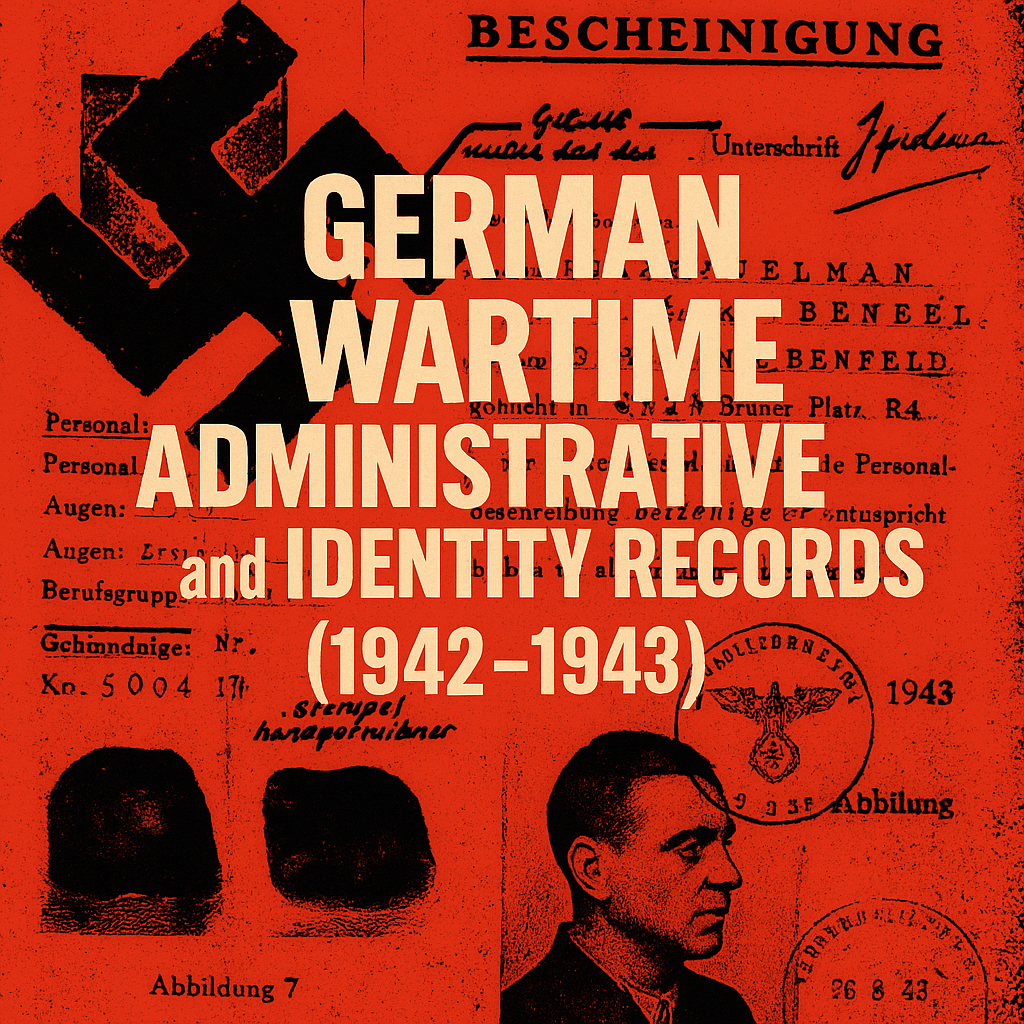
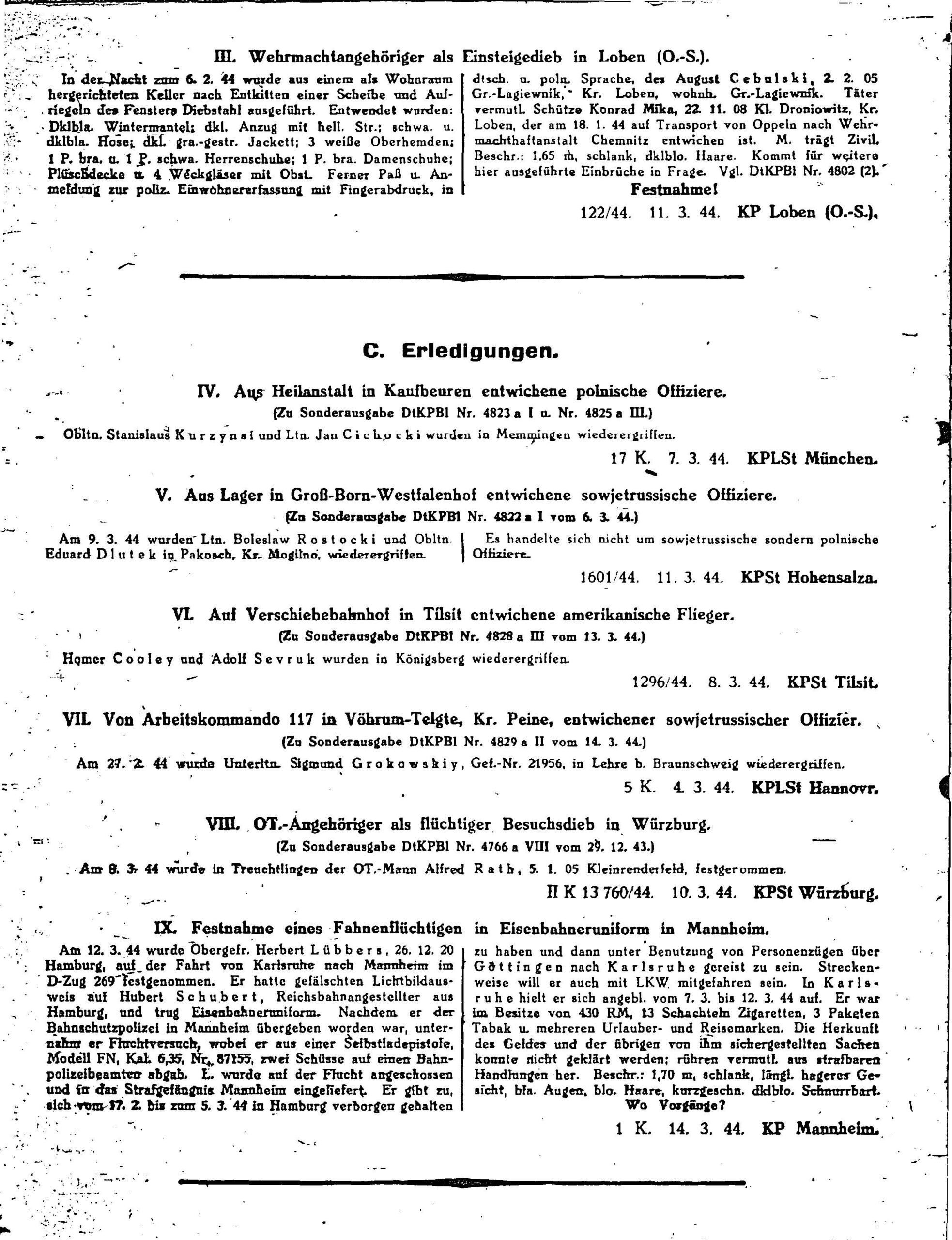
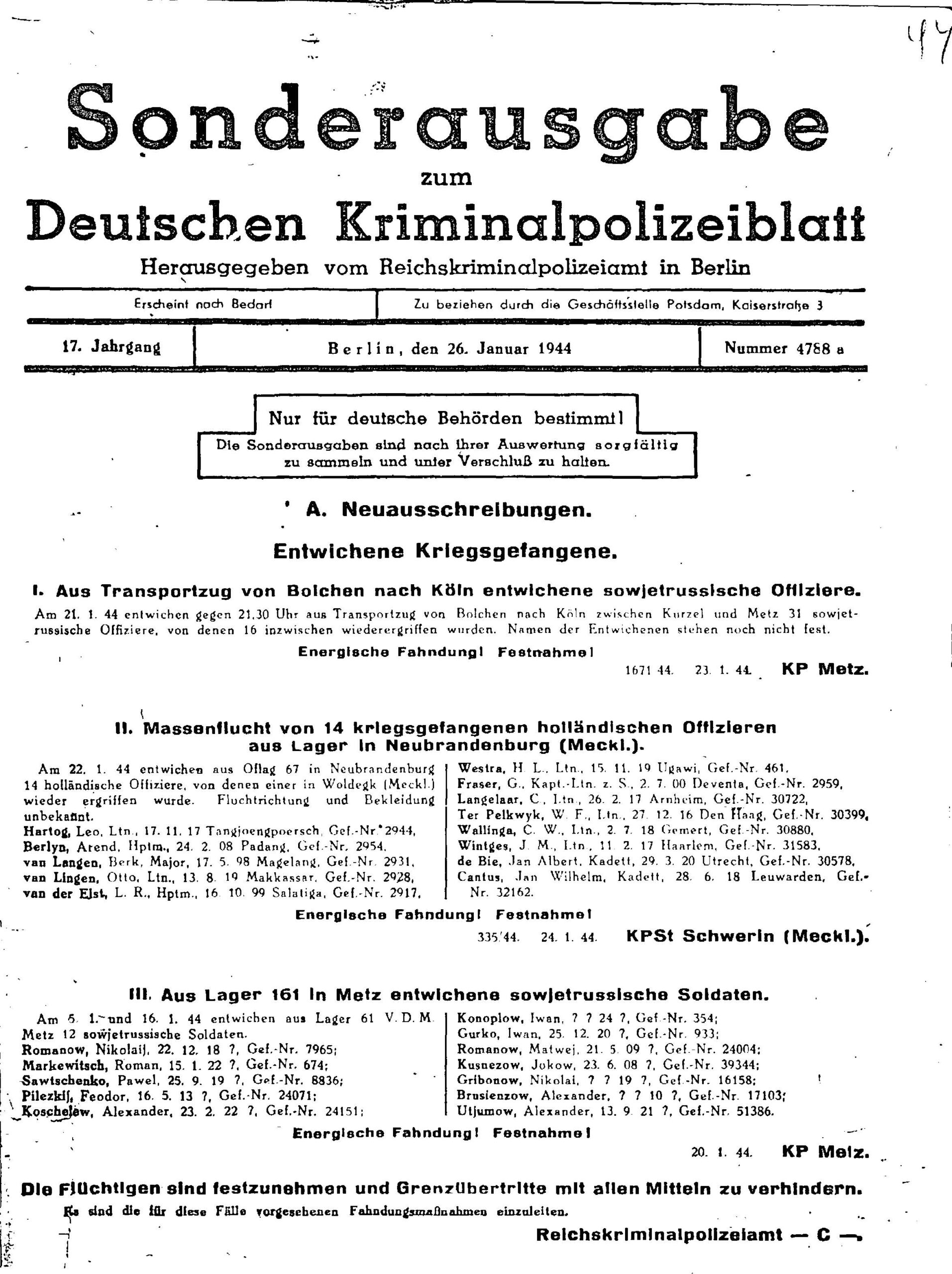
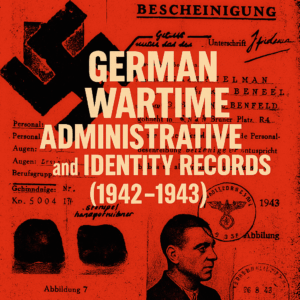
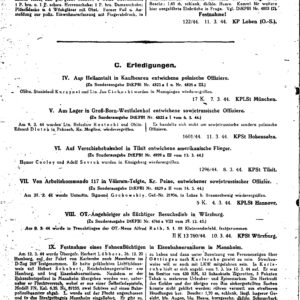
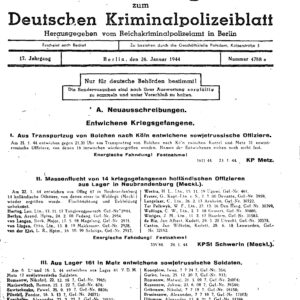





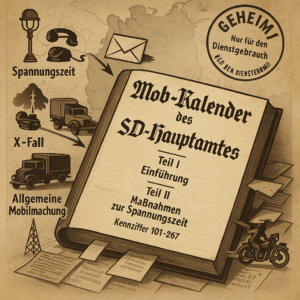


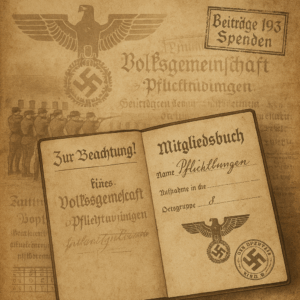

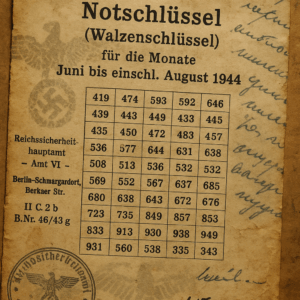

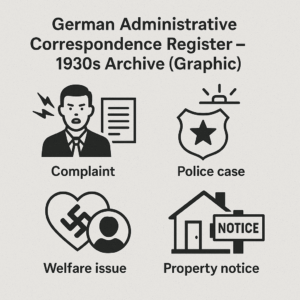



Reviews
There are no reviews yet.